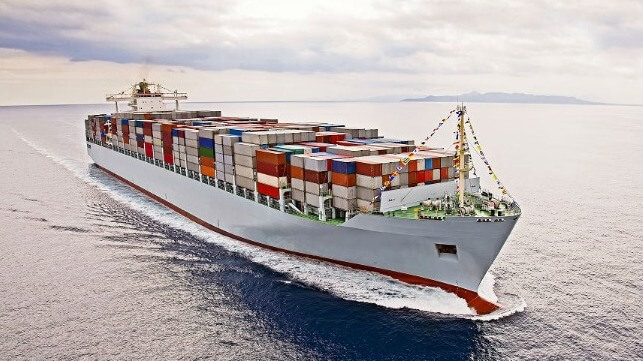Liner Schedule Reliability Nearly Doubled in Past Year to 2020 Levels

After two years of delays and backlogs, liner schedules are approaching the levels they historically operated at before the surge in shipping volumes during the pandemic. The new monthly update on schedule reliability for the analysis firm Sea-Intelligence shows that nearly two-thirds of vessels are reliably on schedule up from just one-third two years ago.
“On a year-over-year level, schedule reliability was a staggering 26.8 percentage points higher,” highlights Alan Murray, CEO of Sea-Intelligence. Analyzing schedule reliability across 34 different trade lanes and more than 60 carriers, they report global schedule reliability for liner routes reached 62.6 percent in March 2023. That compares with 35.8 percent a year ago.
It is only the second month in the past 30 where the average for containerships has been above 60 percent schedule reliability. The trend remains positive with a further 2.4 percentage point increase in March, but the first quarter 2023 average of 58.4 percent remains below the historic norms for the industry which averaged approximately 70 percent before the pandemic.
Declines in volumes that began in 2022 and have carried forward into this year have seen carriers lay up vessels for the first time since the onset of the pandemic and as a result, port congestion has continued to decline. These factors have contributed to the return to improved schedule reliability.
“The average delay for late vessel arrivals also continued to decrease,” notes Murry reporting that it dropped by a further quarter of a day versus February to just over five days. “It is now only marginally higher than at the same point in 2020, and a significant decrease of 2.41 days lower,” versus 2022 points out Murray.
The current five-day average delay is a dramatic improvement from the industry which topped out at nearly an average eight-day delay in January 2022. However, the average of 5.23 days for the first quarter of 2023 remains significantly below historic levels of a delay of around four days before the pandemic.
The recovery in schedule reliability is also broad-based across the major carriers. Sea-Intelligence calculates that the 14 top carriers averaged 61.5 percent schedule reliability on their routes in March 2023. That is nearly double their 33 percent reliability in March 2022 and a further 3.5 percentage point improvement versus February 2023.
All of the largest carriers are solidly above 50 percent schedule reliability with nearly two-thirds above 60 percent. By comparison, a year ago, none of the carriers was above 50 percent reliability. Maersk continues in the position of the most reliable top-14 carrier with a schedule reliability of 68.6 percent, having been consistently among the top performers in the Sea-Intelligence report. However, closely behind is MSC with 67.7 percent in March 2023, nearly double from its March 2022 level of under 35 percent schedule reliability.
Sea-Intelligence also highlights that 13 of the top-14 carriers recorded a month-over-month improvement in schedule reliability in March 2023, with the average being 4.5 percentage points. Zim recorded the largest improvement of 7.1 percentage points. Much of the improvement continues to come from carriers based in Asia, with OOCL, Evergreen, Wan Hai, and Pacific International Lines (PIL) each recording a better than six percentage point improvement during the month.
